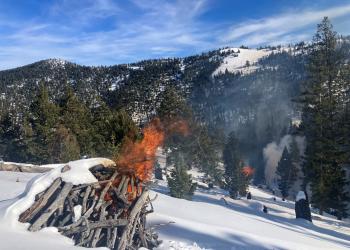Management
Fire and fuels management combines elements of fire prevention, fire suppression, and fire use.
Wildland fire is inevitable in North American ecosystems. Most wildland fire must be suppressed to meet resource and social objectives. Effectively managing forest fuels and dealing with wildfires requires coordination between the Forest Service, Bureau of Land Management, other agencies, and communities.
The Shoshone National Forest fire management program includes two zones (representing the five ranger districts) with program oversight and leadership provided from the Supervisor's Office in Cody. Strong interagency relationships are a critical part of the overall fire management program.
To protect private property and improve the health of the forest and wildlife habitat, we use several methods to reduce forest vegetation (fuels), where the forest may be subject to intense, destructive wildfire. These methods include mechanical fuels treatments (cutting and thinning) and prescribed fire projects. Learn more about each one by exploring the links below.
Mechanical Treatment

Mechanical treatment of hazardous fuels means reducing the amount of vegetation which has built up to dangerous levels, or changing the arrangement of these fuels in the environment.
Prescribed Fire

After many years of fire exclusion, an ecosystem that needs periodic fire becomes unhealthy. The right fire at the right place at the right time can have many benefits.


